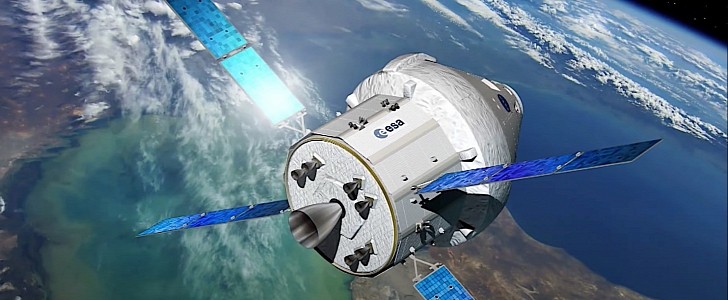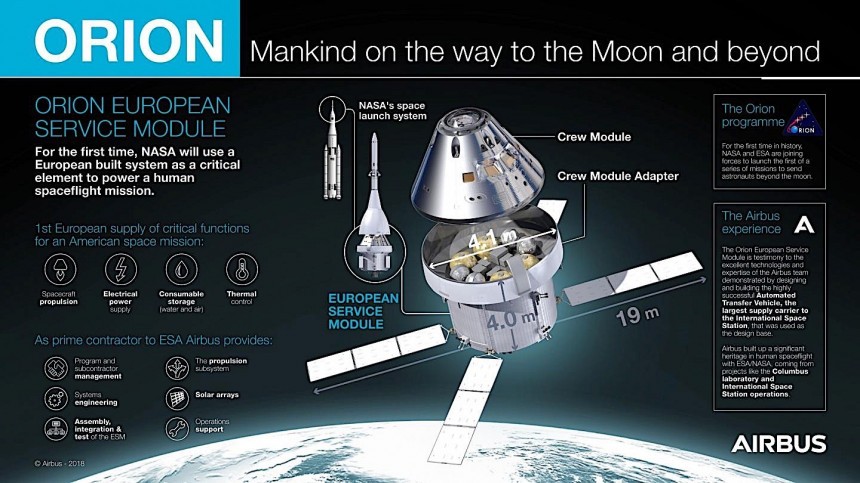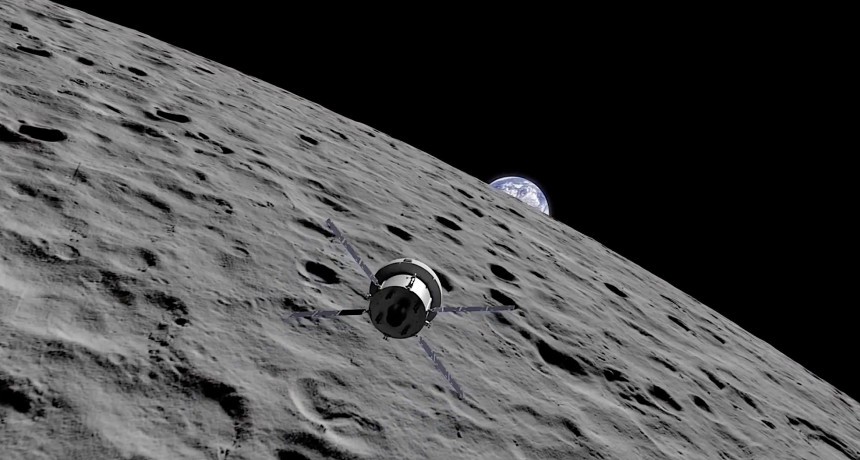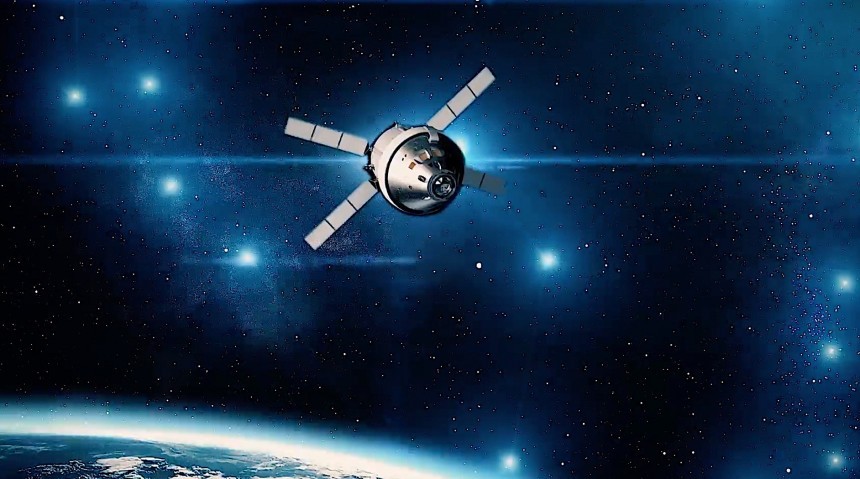A space mission on a grand scale, the likes of the Artemis Program is one far too large for one space agency, one nation, or one company. That's why perhaps the most functionally vital portion of the spacecraft doesn't come from NASA but rather their partners in the European Space Agency.
If the Lockheed Martin Orion is at the heart of Artemis, and the SLS rocket is the soul, think of the European Service Module as the brains of the operation. It ensures that the combined Artemis spacecraft has all the supplies of electricity, fuel, water, breathable air, and cargo it needs for a sustained, long-term mission to the Moon and beyond. Because so much of this technology flies over most people's heads, we managed to find someone more than qualified to help explain it.
Meet Philipe Deloo, the ESA's program manager, in regard to the Artemis Mission. He's been directly involved in the development, manufacturing, and project oversight of the ESA's role in the larger Artemis program for the last decade-plus. As we sat and talked inside NASA's press site, with the big SLS rocket sitting pretty outside the window, Philipe reflected on the grand scale of his team's achievements.
"It feels great. This is the achievement we've been working on for years now. In my case, it's 11 years. It's what we've been looking forward to for a long time." Said Deloo with a smile. Because there's a wide array of technical terms that go into the nitty gritty of explaining the function of the ESA Service Module, Philipe's come up with a way of explaining it in a way people like you or I can understand.
"In terms of, let's say, a car, the Service Module is like the engine, and Orion is like the rest. We're providing the propulsion, the power, communications, and the storage of crew commodities like food, water, and oxygen for a long-duration mission like what's planned with Artemis. From different perspectives, we could either be the brains, the heart, or the legs of the Orion."
Of course, it's almost impossible not to compare the Orion/ESA-SM combination to the old-school Apollo Command and Service Module. While at first glance, the two spaceships appear uncannily similar, you'll quickly notice the European Service Module is a fair bit smaller than what Apollo was rocking 50 years ago. As it turns out, that's all by design.
"When you go to space, and you want to go in a sustainable manner, every single kilo counts. That's why we've compacted as many supplies and equipment into as small of a space as possible. Ultimately, the smaller a spacecraft is, the lighter it is as well. Of course, the tradeoff is that the interior of the Service Module is very tight."
Everything from fuel tanks to helium pressurization tanks to water storage and life support/communications equipment finds its way inside the ESM. Safe to say, once it's all safely inside, there's hardly any room for anything else. Because, as Deloo said, every kilo counts in space, the bulk of the ESM is constructed of novel composite materials that Apollo-era engineers could have only dreamed of.
"The bulk of the European Service Module is comprised of very strong, lightweight carbon fiber composite panels to make a vehicle that's strong while also being very light. Of course, there's also aluminum, which is more classical, incorporated into the design. But it's mostly some form of composite material." Meanwhile, the ESM's solar panels will provide up to 11 Kilowatts of power to keep everything running smoothly.
That's a figure over twice what Apollo used to generate. With its ancestry rooted in the old ESA Automated Transfer Vehicle, ESM's solar panels undoubtedly benefit from years of prior research. This electrical prowess works in tandem with a single Space Shuttle Orbital Maneuvering System engine as its main propulsion. Soon to be replaced by the new Aerojet Orion.
This will work in tandem with eight 490 N Aerojet R-4D-11 Auxiliary Thrusters with 3.92 kN of thrust in total, 24 x 220 N thrust Airbus Reaction Control System engines to bring a degree of controllability far beyond even that of Apollo. The upcoming planned Lunar landing of Artemis III that's going to be a blessing. All in all, the ESM is a crowning achievement of the European continent in the aerospace field in the 21st century.
A signifier that Europe will continue to be a force in the space industry for years to come. With subcontractors in Germany, Switzerland, Italy, Austria, France, Romania, and elsewhere, the ESM is a continent-spanning collaboration that, if nothing else, proves the days of Europeans fighting among each other are long over.
"I've been working with the ESA for over 30 years now, so I've been in this international environment for quite some time now. Yes, of course, there were conflicts between Europeans. But that's in the past now. It's history. Now, we're focused on the future, a future where Europe is a driving force in space travel."
When the first person steps on the Moon in over 50 years, we'll all be very glad indeed. This new era of peace in Europe is upon us. In the end, it benefits all of mankind. Check back tomorrow for live coverage from the launch of Artemis I here on autoevolution.
Meet Philipe Deloo, the ESA's program manager, in regard to the Artemis Mission. He's been directly involved in the development, manufacturing, and project oversight of the ESA's role in the larger Artemis program for the last decade-plus. As we sat and talked inside NASA's press site, with the big SLS rocket sitting pretty outside the window, Philipe reflected on the grand scale of his team's achievements.
"It feels great. This is the achievement we've been working on for years now. In my case, it's 11 years. It's what we've been looking forward to for a long time." Said Deloo with a smile. Because there's a wide array of technical terms that go into the nitty gritty of explaining the function of the ESA Service Module, Philipe's come up with a way of explaining it in a way people like you or I can understand.
"In terms of, let's say, a car, the Service Module is like the engine, and Orion is like the rest. We're providing the propulsion, the power, communications, and the storage of crew commodities like food, water, and oxygen for a long-duration mission like what's planned with Artemis. From different perspectives, we could either be the brains, the heart, or the legs of the Orion."
"When you go to space, and you want to go in a sustainable manner, every single kilo counts. That's why we've compacted as many supplies and equipment into as small of a space as possible. Ultimately, the smaller a spacecraft is, the lighter it is as well. Of course, the tradeoff is that the interior of the Service Module is very tight."
Everything from fuel tanks to helium pressurization tanks to water storage and life support/communications equipment finds its way inside the ESM. Safe to say, once it's all safely inside, there's hardly any room for anything else. Because, as Deloo said, every kilo counts in space, the bulk of the ESM is constructed of novel composite materials that Apollo-era engineers could have only dreamed of.
"The bulk of the European Service Module is comprised of very strong, lightweight carbon fiber composite panels to make a vehicle that's strong while also being very light. Of course, there's also aluminum, which is more classical, incorporated into the design. But it's mostly some form of composite material." Meanwhile, the ESM's solar panels will provide up to 11 Kilowatts of power to keep everything running smoothly.
This will work in tandem with eight 490 N Aerojet R-4D-11 Auxiliary Thrusters with 3.92 kN of thrust in total, 24 x 220 N thrust Airbus Reaction Control System engines to bring a degree of controllability far beyond even that of Apollo. The upcoming planned Lunar landing of Artemis III that's going to be a blessing. All in all, the ESM is a crowning achievement of the European continent in the aerospace field in the 21st century.
A signifier that Europe will continue to be a force in the space industry for years to come. With subcontractors in Germany, Switzerland, Italy, Austria, France, Romania, and elsewhere, the ESM is a continent-spanning collaboration that, if nothing else, proves the days of Europeans fighting among each other are long over.
"I've been working with the ESA for over 30 years now, so I've been in this international environment for quite some time now. Yes, of course, there were conflicts between Europeans. But that's in the past now. It's history. Now, we're focused on the future, a future where Europe is a driving force in space travel."













